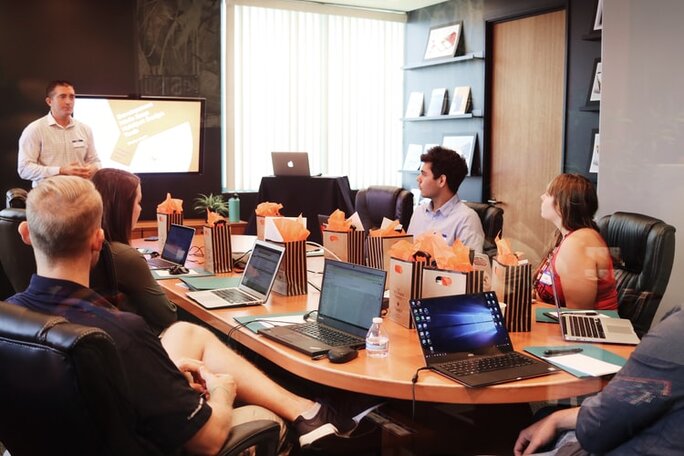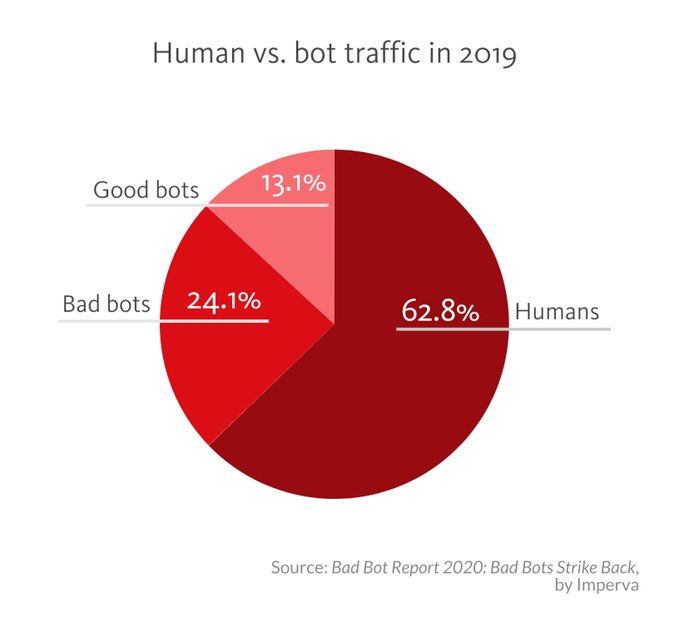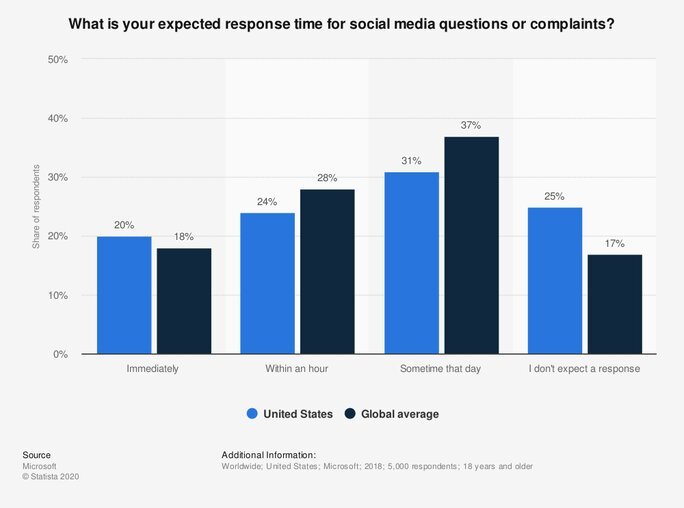How successful your business is, depends almost entirely on how the public views it. Your brand image is what helps you attract new customers and retain old ones. It’s what has the power to drive your growth, improve your brand awareness, and boost your bottom line even.
But of course, it can do just the opposite as well.
A blow to your image and reputation can run you out of business. Even a minor PR crisis on social media can have far-reaching consequences. And while there are certainly ways to handle a PR crisis once it’s occurred, it’s much better to take proactive measures and avoid it in the first place.
So, let’s take a look at what you can do to avoid social media PR scandals and establish an impeccable brand image.
1. Understand the goals you want to achieve with your presence
When you’re starting an online business, it simply makes sense to work on developing an imposing social media presence. After all, if your business isn’t on Facebook and Twitter (at the very least), it’s almost like it doesn’t even exist.
But, what are your exact goals with your newly-made social media accounts? What do you want to achieve with a strong social media presence?
When answering these questions, you need to be as detailed as possible. For instance, “I want to attract an audience” doesn’t cut it.
How do you want to attract an audience? Will you post frequent blogs, share behind the scenes videos, use social media as your primary channel for customer support? How will you engage with your audiences? What will your brand voice be?
The more detailed you are about your goals and how you plan to achieve them, the better control you’ll have over the content you post, the comments you reply with, and the brand image you present.
It will help you stay on top of your brand reputation and enable you to avoid PR scandals that could take you out of business.
2. Introduce community rules early on
Establishing community rules and guidelines early on is of the utmost importance for any business. It’s what will set the tone for the way you interact with your audiences, both offline and online.
Yes!
Suppose your customers and followers have no idea what behaviors are and aren’t allowed on your social media accounts. In that case, no one could blame them for taking things a bit too far – making degrading complaints, leaving hateful comments, insulting other members of your community, and similar “toxic behavior.”
Even if none of your followers ever read your community guidelines, you can always refer back to them when deciding to delete certain members’ comments and posts. Be clear and detailed about what’s allowed on your page and what’s not. Specify which types of posts could get deleted and what you’ll do if someone doesn’t follow the guidelines.
Clear community guidelines won’t only help you determine how to react to different followers, but they’ll also help you spread your brand message.
3. Staff training and guidelines to pre-mange the crisis

Some of the worst social media PR disasters occur due to human error. Employees accidentally upload sketchy posts on the business social media account instead of using their social accounts.
They answer public customer questions incorrectly, making your brand a target of heavy criticism. They upload poorly chosen links and images. They make seemingly innocent mistakes that turn into PR nightmares.
The only way to prevent such errors and avoid similar social media scandals is by implementing strict guidelines and investing time and effort into teaching social media crisis management to your team. This will help them understand exactly how to respond if an issue escalates.
Everyone who has access to your business’s social media profiles and can manage and edit them needs to be clear about the dos and don’ts of social media use.
Determine what type of company information can be shared on social media. Ensure that those corresponding directly with your followers have the necessary skills and knowledge to address their concerns.
Teach your staff about your brand voice and persona so that you have a unified image on your socials. Be clear about whether your employees can associate themselves with your brand on their profiles.
Again, the more detailed you are in your guidelines and training, the easier it will be to minimize the risks of PR scandals, and the easier it will be to manage them if they arise.
4. The battle against the bot army
Social media bots can be highly valuable to those running a growing business. Like web crawlers and spiders, some bots can help you gather data relevant to developing a sustainable business strategy.
Other bots can help you stay on top of your inbox – chatbots can provide real-time feedback to your followers, answer common questions, and offer valuable information without human interference.
However, many social media bots can cause massive PR problems, as well.
It’s estimated that these “bad bots” are responsible for over 24.1% of all internet traffic. They’re designed for various purposes – spreading misinformation, spamming, triggering negative responses, stirring up a commotion among your community, and more.

To handle these bots, you first need to learn how to identify them. There are usually some telltale signs, such as:
- Generic profile photo (landscape, animals, celebrity, etc.)
- Incomplete profile information
- A recently made account that follows thousands of people without having many followers
- Unusually high activity on the account (bots can be active 24/7, posting every hour of the day)
- A high number of spammy hashtags in posts
- Automated posts (always at the same hour/day)
- Aggressive content
Of course, some real accounts will follow some of the same patterns, so you must investigate a little before you deem someone a bot.
To avoid bot PR problems, you need to be continually monitoring your traffic on social media, keep an eye on the comments and brand mentions, and report all suspicious activity.
5. Ensure your team replies on time
A vast majority of your followers expect a fast response rate on social media. In the US, 20% of them expect you to respond immediately, while 24% hope to hear from you within the hour.

If you notice negative comments, complaints, or bad reviews, ignoring them is one of the worst things you could do. It will only show your followers that you’re not interested in their experience with your brand, and that’s a PR no-no.
So, make sure that your team replies to all comments on time (preferably within just a few hours). Address both positive and negative comments on social media with professionalism and respect, clarifying what went wrong, why, and what you’re doing to improve. Even negative comments can positively impact your image if they’re handled properly.
And speaking of timely responses, it’s also critical to correct and respond to any social media mistakes as soon as they happen. If your employees post something wrong or say something, fix it immediately.
And don’t just delete the tweet (you can rest assured someone’s taken a screenshot less than a second after the post). Address the issue, confess the mistake, and be honest about how and why it happened.
6. Preparing for likely scenarios

Of course, social media PR scandals happen regardless of what you do to prevent them. A slip-up is inevitable, especially if you’re highly active on your socials (as you should be). So, while being proactive and minimizing slip-ups is essential, so is being prepared for mistakes.
As previously mentioned, human error is the most common cause of a social media PR crisis. The best way to prepare for it is to train your staff and limit the number of people who access your business profiles.
Use social media management tools to handle posting and scheduling. Make sure that each post is proofread and edited. Have everyone follow your social media rules and guidelines.
For instance, you can use SocialPilot’s team and collaboration feature to assign selective access to each team member. With its tighter workflow no post goes unchecked without the approval of admin.
Preparing for likely scenarios will enable you to respond better to PR mistakes and allow you to handle them without as many problems as you otherwise would.
7. Developing your approach
Once you’ve analyzed the likely scenarios, the next step is developing a crisis response team and a management plan—delegate tasks, roles, and responsibilities in the event of a PR nightmare.
Have a person in charge of monitoring brand mentions, a PR manager who will have a response strategy at the ready, a communications manager who will oversee the entire operation. Make sure that everyone has a straightforward task to perform so that you can handle the crisis efficiently.
You could go so far as to have crisis drills on occasion to see how well your teams would respond to an actual PR problem.
8. Account Security
Some social media PR scandals are the result of a security issue. An unauthorized user accessed your account and started wreaking havoc. A hacker limited your use of the account, someone cracked your password and started causing problems – in essence, you lose control over an account.
To prevent such issues, you need to follow the best social media cybersecurity measures. That involves:
- Using strong passwords
- Limiting the number of authorized account managers
- Preventing log-ins from personal devices
- Accessing the account through secure networks only
- Using two-factor authentication
- Educating your employees on the best cybersecurity practices
Employees must also be well-versed with platform-specific privacy controls. You can refer to our social media privacy settings guide to ensure both brand and personal accounts are safeguarded.
Additionally, investing in a knowledgeable IT team will also help you solve many security issues before they even arise, so it would be a good idea to hire experienced professionals.
9. Do not feed the trolls
Finally, a problem that every business and individual on social media encounters are trolls. If you don’t have a plan for handling them, you will come across a PR nightmare sooner or later.
Trolls are essentially individuals who want to stir up trouble online. They could be making fun of your brand, spreading misinformation, getting you to fight with your competitors, and more. When it comes down to it, they’re not very different from the “bad bots” of social media.
When handling the trolls, the most important thing to remember is DON’T STOOP TO THEIR LEVEL. Trolls can be insulting, hateful, aggressive, and the best thing to do is handle them professionally. Don’t start arguing with them or trying to reason with them.
Respond professionally and respectfully, and if they go too far, don’t be afraid to block the account and delete their posts on your timeline.
Conclusion
Social media PR scandals can shape your brand image and reputation. It’s critical that you’re well prepared for them and that you do all in your power to avoid them. And should they happen anyway, handling them quickly and professionally is the best thing you could do.
.png)

-359x188.png)